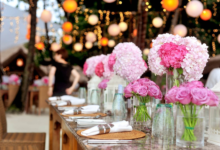Illuminating Art: A Comprehensive Guide to Stained Glass Circles

Stained glass has a rich history and has been used for centuries to create beautiful, colorful works of art. Among the various forms and shapes that stained glass can take, circles are particularly captivating. Stained glass circles can be found in windows, ornaments, suncatchers, and even jewelry, each piece telling a unique story through its vibrant colors and intricate designs. In this comprehensive guide, we will explore the history, techniques, applications, and creative possibilities of stained glass circles.
The History of Stained Glass Circles
Ancient Origins
Stained glass as an art form dates back to ancient times. Early examples can be traced to the Roman Empire, where glassmakers used colored glass to create decorative objects and windows. The techniques and materials have evolved significantly over the centuries, but the fundamental beauty of stained glass remains unchanged.
Medieval Europe
The use of stained glass flourished during the medieval period, particularly in the construction of churches and cathedrals. Circular stained glass windows, often referred to as rose windows, became a prominent feature in Gothic architecture. These intricate designs depicted biblical scenes, saints, and symbolic motifs, and were crafted to inspire awe and devotion among worshippers.
Modern Era
In the modern era, stained glass continues to be a beloved art form. Artists and designers have expanded its applications beyond religious settings, incorporating stained glass circles into homes, public buildings, and contemporary art installations. The introduction of new materials and techniques has further enriched the creative possibilities of stained glass.
The Artistic Appeal of Stained Glass Circles
Symbolism and Meaning
Circles are a powerful symbol in art and culture, representing concepts such as eternity, unity, and wholeness. In stained glass, circles can frame a focal point or create a harmonious pattern that draws the viewer’s eye. The use of circles in stained glass designs adds a layer of meaning and symbolism to the artwork.
Aesthetic Beauty
The aesthetic appeal of stained glass circles lies in their ability to play with light and color. When sunlight passes through the colored glass, it creates a dazzling display of hues and patterns that can transform a space. The circular shape allows for a smooth flow of light and color, enhancing the visual impact of the design.
Versatility
Stained glass circles are incredibly versatile and can be incorporated into various settings and applications. Whether used as a window panel, a hanging ornament, or a decorative element in a piece of furniture, stained glass circles can add a touch of elegance and charm to any environment.
Techniques for Creating Stained Glass Circles
Designing
The first step in creating a stained glass circle is designing the pattern. Artists can draw inspiration from various sources, including nature, abstract art, and historical motifs. The design should consider the size and placement of the circle, as well as the colors and types of glass to be used.
Cutting the Glass
Once the design is finalized, the next step is cutting the glass pieces. This requires precision and skill, as each piece must fit perfectly within the pattern. Glass cutters and grozing pliers are commonly used tools in this process. For circular pieces, a circle cutter can be employed to achieve a perfect shape.
Assembling the Pieces
After cutting, the glass pieces are assembled on a flat surface according to the design. Copper foil or lead came is used to join the pieces together. The choice between copper foil and lead came depends on the desired look and structural requirements of the piece. Copper foil allows for more intricate designs, while lead came provides additional strength for larger pieces.
Soldering
Once the pieces are in place, they are soldered together to create a sturdy and cohesive structure. The solder is melted and applied along the seams where the glass pieces meet, securing them in place. Proper ventilation and safety precautions are essential during this step to avoid inhaling fumes.
Cleaning and Patina
After soldering, the stained glass circle is cleaned to remove any flux residue and impurities. A patina solution can be applied to the solder lines to give them a finished look. Black or copper patina is commonly used to enhance the contrast and depth of the design.
Framing and Finishing
The final step is framing the stained glass circle. This provides additional support and a finished edge to the piece. Frames can be made from various materials, including metal, wood, and lead. The finished piece is then ready to be displayed or installed.
Applications of Stained Glass Circles
Architectural Windows
Stained glass circles are often used in architectural windows, adding a touch of elegance and artistry to buildings. Circular windows, or oculi, can be found in churches, homes, and public buildings. These windows not only enhance the aesthetic appeal of the structure but also allow natural light to filter through, creating a warm and inviting atmosphere.
Suncatchers
Suncatchers are small stained glass circles designed to be hung in windows or other light-filled spaces. These decorative pieces capture sunlight and scatter it in beautiful patterns, creating a mesmerizing display of colors. Suncatchers are popular as gifts and home decor items.
Ornaments and Jewelry
Stained glass circles are also used to create ornaments and jewelry. These smaller pieces can be crafted with intricate designs and vibrant colors, making them perfect for pendants, earrings, and decorative ornaments. The durability and timeless beauty of stained glass make it an excellent choice for creating cherished keepsakes.
Art Installations
Contemporary artists often incorporate stained glass circles into their installations, exploring new ways to play with light, color, and space. These art installations can be found in galleries, museums, and public spaces, where they captivate viewers with their dynamic and interactive qualities.
Creative Ideas for Stained Glass Circles
Nature-Inspired Designs
Drawing inspiration from nature can result in stunning stained glass circles. Consider incorporating elements such as flowers, leaves, birds, and butterflies into your designs. These motifs can bring a touch of the outdoors into your home and create a serene and natural ambiance.
Abstract Patterns
Abstract patterns offer endless possibilities for creativity and expression. Experiment with geometric shapes, flowing lines, and bold color combinations to create unique and eye-catching stained glass circles. Abstract designs can add a modern and artistic touch to any space.
Seasonal Themes
Celebrate the changing seasons with stained glass circles that reflect the beauty of each time of year. Create designs featuring spring blossoms, summer suns, autumn leaves, and winter snowflakes. Seasonal themes can be a wonderful way to decorate your home and celebrate the passing of time.
Personal and Custom Designs
Personalized stained glass circles make thoughtful and meaningful gifts. Consider creating custom designs that incorporate names, initials, or significant dates. These personalized pieces can commemorate special occasions such as weddings, anniversaries, and births.
Illuminated Displays
Enhance the beauty of your stained glass circles by incorporating lighting elements. Backlighting or placing the piece in front of a light source can create a stunning illuminated display. This technique can be particularly effective for showcasing intricate designs and vibrant colors.
Read also What are the implications of deepfake technology on information authenticity and media trust?
Tips for Working with Stained Glass Circles
Safety First
Working with stained glass requires careful attention to safety. Wear protective eyewear and gloves to prevent injuries from glass shards and sharp edges. Ensure proper ventilation when soldering to avoid inhaling fumes, and always follow safety guidelines when handling tools and materials.
Precision and Patience
Creating stained glass circles requires precision and patience. Take your time when cutting and fitting the glass pieces to ensure a perfect fit. Rushing through the process can result in mistakes and compromises the quality of the finished piece.
Experiment with Color
Don’t be afraid to experiment with different colors and combinations in your stained glass designs. Consider how the colors will interact with light and each other to create the desired effect. Mixing transparent and opaque glass can add depth and dimension to your designs.
Use Quality Materials
Investing in high-quality glass and materials will result in a more durable and beautiful finished piece. Quality glass has better color consistency and clarity, while high-grade tools and supplies ensure a smoother and more efficient working process.
Practice and Learn
Like any art form, mastering stained glass takes practice and dedication. Don’t be discouraged by initial challenges or setbacks. Continuously seek to learn new techniques and improve your skills through practice and experimentation.
Conclusion
Stained glass circles are a timeless and captivating form of art that combines beauty, symbolism, and functionality. Whether used in architectural windows, decorative suncatchers, or contemporary art installations, stained glass circles add a touch of elegance and charm to any setting. By understanding the history, techniques, and creative possibilities of stained glass circles, artists and enthusiasts can unlock new levels of creativity and expression. So gather your tools, let your imagination soar, and start creating your own stunning stained glass circles today!





